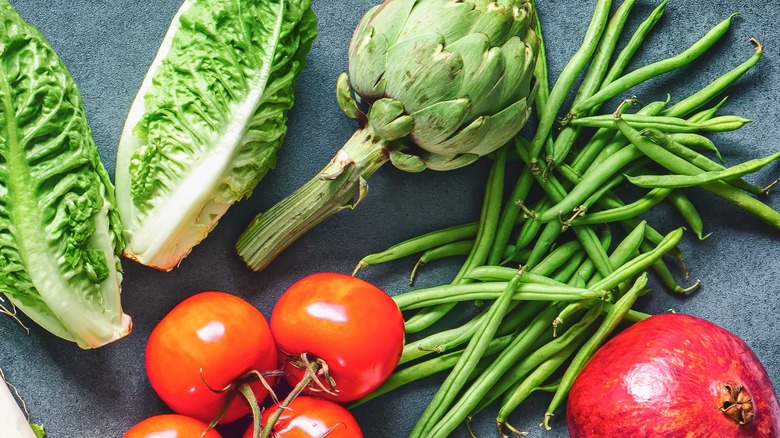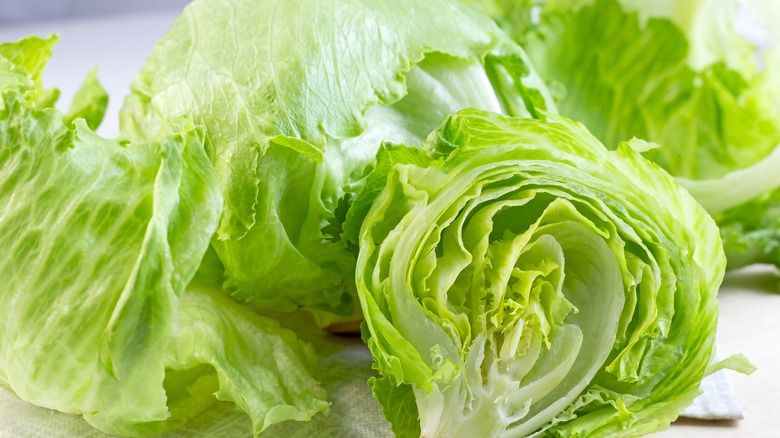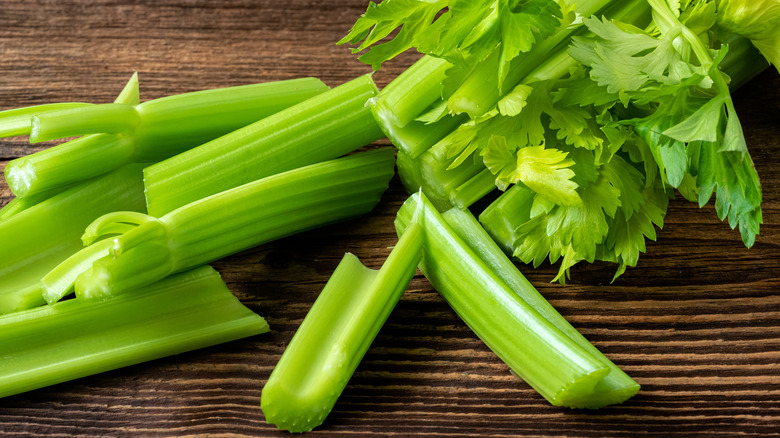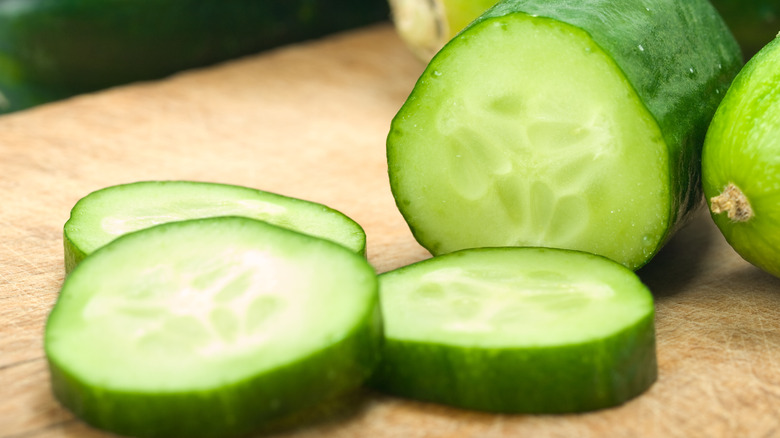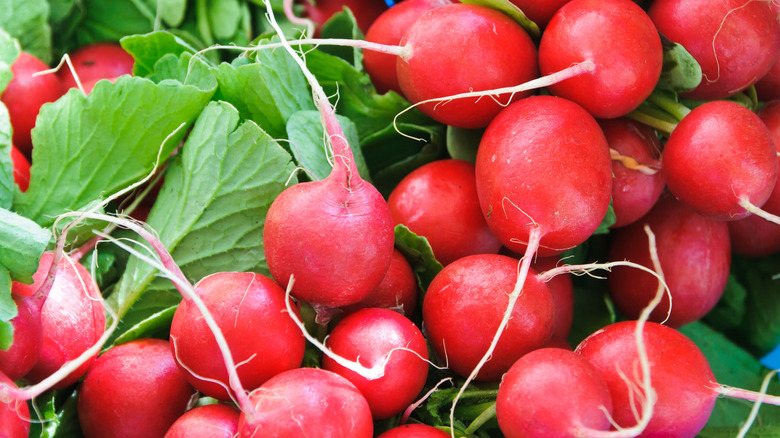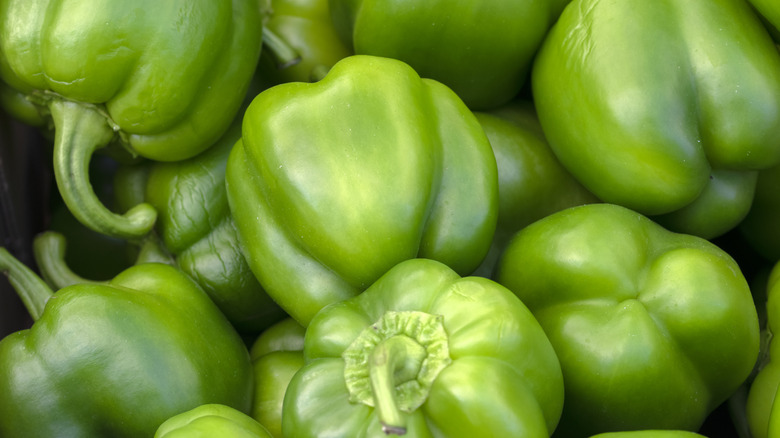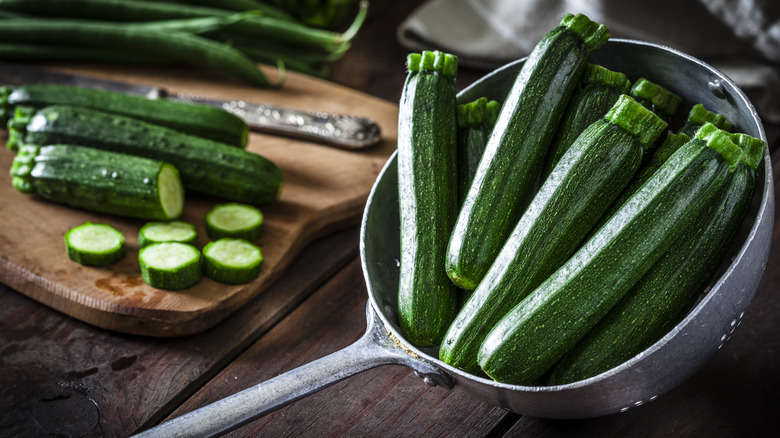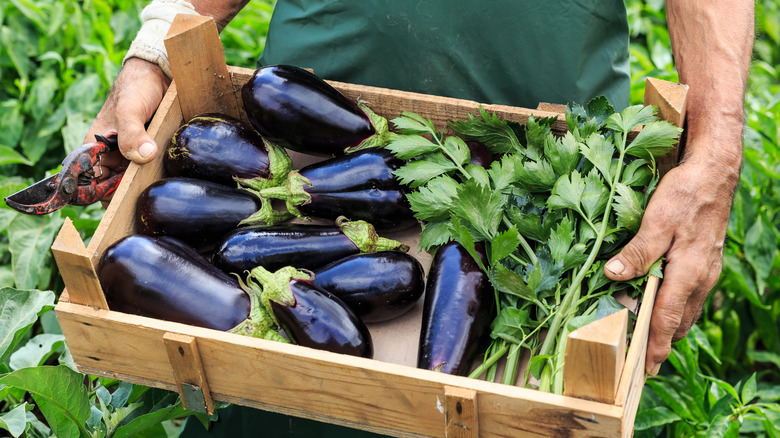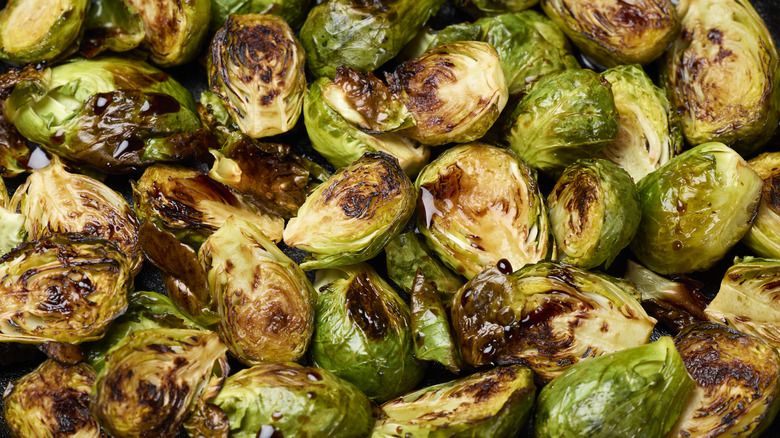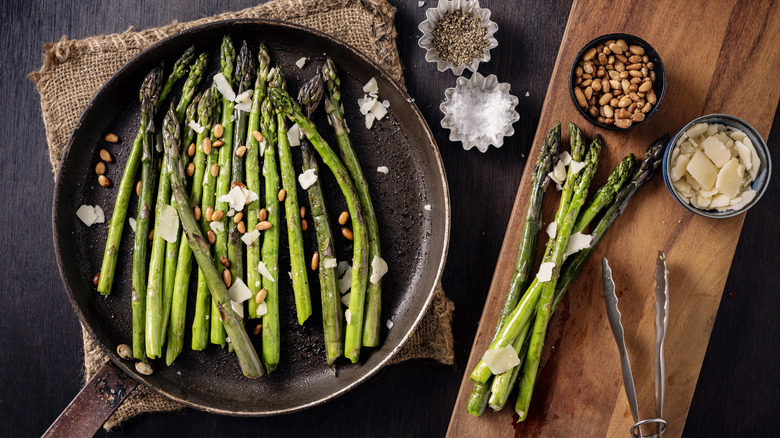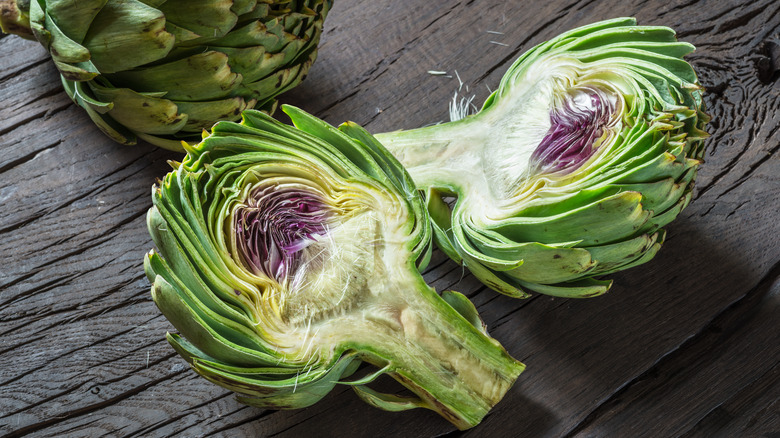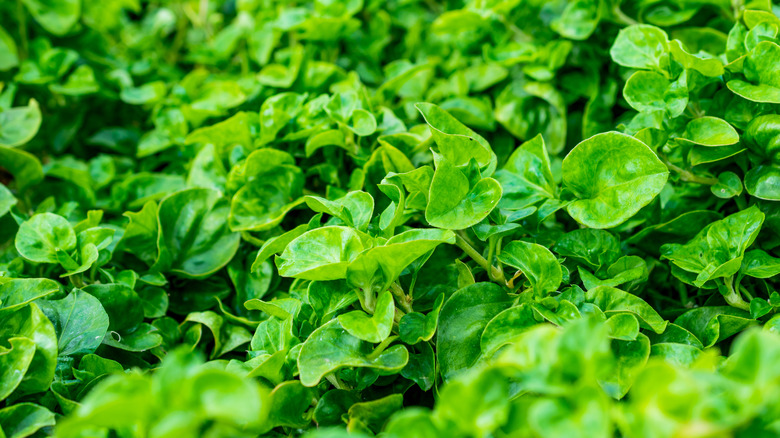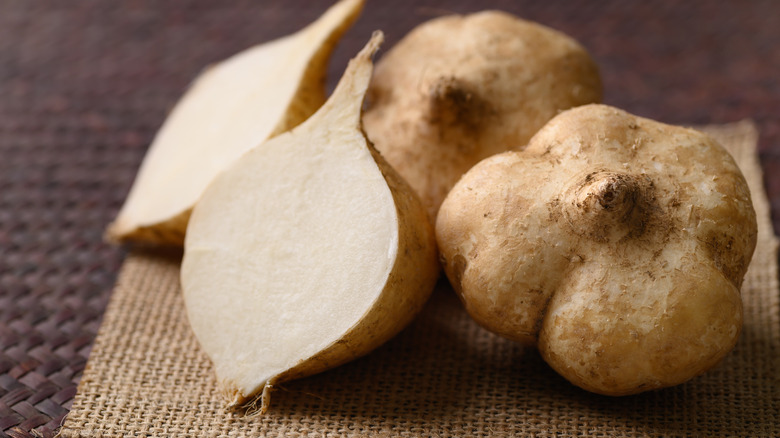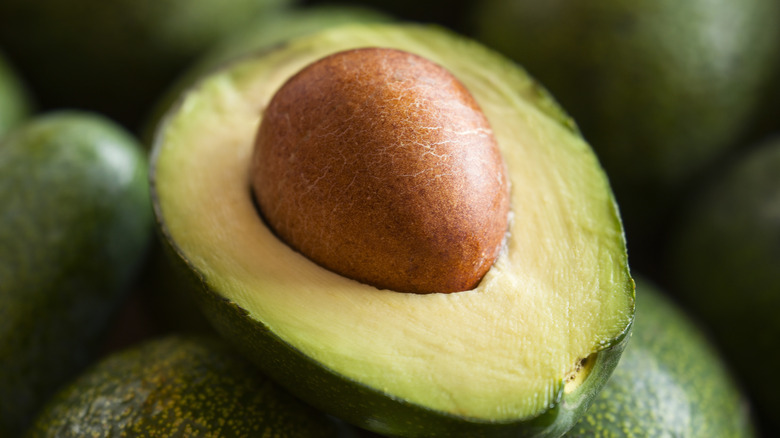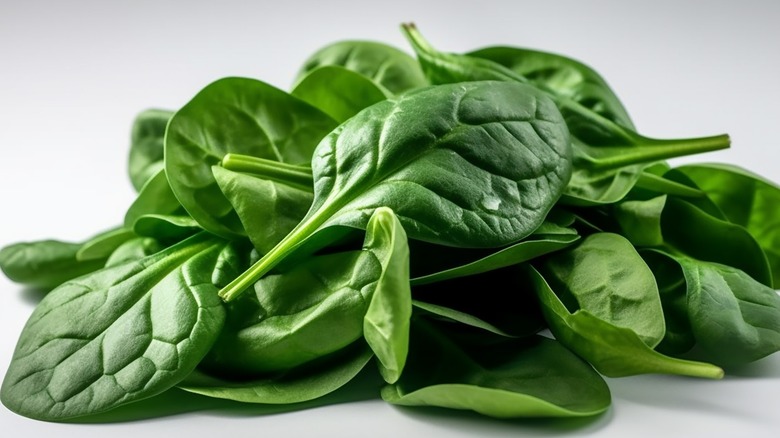14 Vegetables That Aren't As Nutritious As You Think
Vegetables are universally celebrated for their role in a healthy diet. They're rich in vitamins, minerals, fiber, and antioxidants. But not all vegetables are created equal, and some that have been hailed as nutritional superstars may not live up to their reputation. From avocados to spinach, watercress to jicama, the nutritional content and health benefits can vary significantly. Factors such as preparation methods, chemical makeup, and even historical misconceptions can influence a vegetable's actual nutritional value. While they continue to be integral to balanced nutrition, the conventional wisdom surrounding certain vegetables may warrant closer inspection.
The way we consume and prepare these vegetables can dramatically affect their nutritional profile. Adding high-calorie dressings or dips, or opting for certain cooking methods like boiling that leach nutrients, can diminish their nutritional integrity. Moreover, some vegetables contain unique compounds that may hinder the absorption of nutrients, exacerbate certain health conditions, or even cause unexpected reactions in sensitive individuals. Even a simple matter like peeling can change the nutritional qualities of a vegetable.
1. Iceberg lettuce
Iceberg lettuce lacks nutrients compared to its common alternatives. It primarily consists of water, constituting about 95-96% of its weight. This high water content means that it is not only low in calories, but also low in fiber, vitamins, and minerals. Iceberg lettuce has lower levels of essential vitamins like vitamin B-12, vitamin D, and vitamin E. Though it contains some dietary fiber, the quantity is not substantial. Compounds like lycopene and beta tocopherols are absent, which are known for their antioxidant properties.
While iceberg lettuce is not entirely devoid of nutrients, it simply pales in comparison to other vegetables in the leafy green category. For instance, spinach contains substantially higher levels of vitamin K, vitamin A, magnesium, and folate.
Iceberg lettuce is often cultivated in a manner that prioritizes shelf-life and appearance over nutritional content. A 2022 study found that lettuces grown in low-nutrient solutions have longer shelf lives, which might be crucial for long-distance shipment. By adjusting the nutrient, growers can also control how the lettuce looks, putting appearance before nutritional value.
2. Celery
Celery, widely recognized in various cuisines, is notable for its high water content, which constitutes about 95% of its weight. A 100-gram serving provides only 15 to 17 calories, marking it as a poor source of energy. Although it contains minerals such as calcium and potassium, there are no significant amounts of iron, copper, selenium,or molybdenum. With low protein and fat content, celery isn't providing much in the way of amino acids or fatty acids.
Some individuals may experience bloating or gas when consuming celery in excess, a side effect linked to the vegetable's high levels of mannitol. Additionally, the popular notion of celery as a negative calorie food — where more calories are burned in digestion than consumed — has been scientifically debunked due to no real-world evidence to support it, said Tim Garvey, chair of the department of nutrition sciences at the University of Alabama, Birmingham to BBC. He further notes that while there may only be 10 calories in a large stick of celery, the body takes just ⅕ of that amount to process.
3. Cucumber
Cucumber's inclusion in salads, sandwiches, and detox waters is likely driven more by its hydrating quality and palate appeal than by any significant nutritional benefits. Examining a 100-gram serving size reveals the nutritional drawbacks of this vegetable. With only 0.62 grams of protein, cucumber is not a substantial source of essential amino acids, which are needed for muscle growth and repair. Furthermore, it contains only a minimal amount of fat, making it an insufficient source of essential fatty acids that are vital for various bodily functions, including brain health.
Cucumbers are about 14 to 16 calories each, which means they don't provide much energy. This lack of energy is mainly attributed to its high water content and low carbohydrate content. Though some minerals such as calcium, magnesium, and potassium are present, their quantities are relatively small. For example, the 16 milligrams of calcium in a cucumber is quite low, especially when considering the daily intake of 1,200 milligrams as recommended by Harvard Health Publishing.
4. Radish
One of the misconceptions surrounding radishes may stem from their bold taste, often mistaken as an indicator of high nutrient content. While it adds texture and twist to dishes, the nutritional contribution is comparatively minimal. Moreover, radishes are commonly consumed in small quantities due to their strong flavor, further limiting their contribution to our day-to-day intake.
Radishes are highly hydrating with about 95% water, but at only 12 calories per ½ cup, they don't provide much energy. With 0.68 grams of protein, 0.1 grams of fat, and 3.4 grams of carbohydrates, radish is not a significant source of essential macronutrients. The 1.6 grams of dietary fiber can contribute to digestive health but is not notable.
Radishes are known to contain compounds such as raffinose and sulfur, which, for some individuals, may lead to digestive sensitivity. Raffinose is a complex sugar found in radishes and other cruciferous vegetables. Humans lack the enzyme needed to break down raffinose in the intestine, detailed in a 2020 study. When raffinose reaches the intestine, it is fermented by gut bacteria, leading to the production of gas that triggers bloating, flatulence, or other abdominal discomfort.
5. Green bell peppers
Firstly, green bell peppers are harvested before they fully ripen. When compared to red, yellow, or orange bell peppers, they contain lower levels of vitamins and antioxidants. For example, red bell peppers have higher levels of vitamin C and beta-carotene, an essential antioxidant for eye health.
One serving of green bell pepper has a high water content, similar to other vegetables like radishes and cucumbers. It offers minimal energy, ranging between 20 to 23 calories, making it hydrating but not energy-dense. Protein content is relatively low at 0.72 grams, and the total lipid (fat) content is only 0.11 grams, providing minimal essential amino acids and fatty acids. Carbohydrates are also low, with 4.78 grams. The dietary fiber content of 0.9 grams, though low, may still contribute to digestive health. It contains minimal amounts of calcium, iron, magnesium, and phosphorus. The potassium content is higher but still doesn't make a significant contribution to the daily recommended intake of at least 3,500 milligrams.
6. Zucchini
Zucchini, or summer squash, has a high water content, making it hydrating but not energy-dense, providing only 17 calories per serving. Protein content in zucchini is slightly higher than in green bell pepper at 1.21 grams, but it's still a minimal source for essential amino acids. The total fat content is also low, with 0.32 grams. Carbohydrates stand at 3.11 grams, which is modest and might not benefit digestion.
The mineral profile is not particularly rich but offers more than green bell pepper. Calcium and iron are present at 16 mg and 0.37 mg respectively, while magnesium, phosphorus, and potassium are more prominent, with 18 mg, 38 mg, and 261 mg, respectively. Zucchini offers a varied vitamin profile. While vitamin C content is lesser than green bell pepper at 17.9 mg, it provides small amounts of vitamin A, vitamin E, and vitamin K. B-vitamins like thiamin, riboflavin, niacin, and vitamin B-6 are also present in small quantities, along with folate and choline.
Zucchini is also known to contain compounds called cucurbitacins. In higher concentrations, these substances can lead to gastrointestinal discomfort, such as stomach cramps or indigestion, as explained by Sarah Browning, an educator for the University of Nebraska Extension in Lancaster County.
7. Eggplants
Eggplant, also known as aubergine, is a nutrient-dense vegetable rich in fiber and antioxidants. However, it is not a nutrient-dense food. With only 25 calories per serving, eggplant is low in energy. It contains a relatively low amount of protein. This makes it an unsuitable source for those looking to gain protein from a plant-based diet. With only 0.18 grams of total fat, eggplant is not a significant source of essential fatty acids.
Despite its presence in a variety of cuisines, eggplant is lacking in some essential vitamins, particularly vitamin B-12, vitamin D, and vitamin A. The amounts of vitamin C, E, and most B vitamins are also modest, meaning eggplant would not be relied upon as a rich source for these nutrients. The levels of critical minerals such as calcium, iron, and zinc are relatively low.
The manner in which eggplant is cooked can significantly affect its nutritional value. Frying, a common preparation method, can add unhealthy fats and reduce antioxidant content, further diminishing the already limited nutritions of the vegetable. Eggplant's skin holds several nutrients and an important antioxidant called nasunin that can protect our brain from the adverse effects of free radicals, according to Medical News Today.
8. Brussels sprouts
With only 3.38 grams of protein per serving, Brussels sprouts are not an ideal source for those seeking protein from plant-based foods. The total fat in Brussels sprouts is merely 0.3 grams. This limits their contribution to essential fatty acids. While they contain reasonable levels of certain minerals like potassium and phosphorus, Brussels sprouts are relatively low in others, such as magnesium, copper, and selenium.
Vitamin D is absent in Brussels sprouts, making it an unsuitable source for this essential vitamin. Also, they contain no vitamin B-12, which is typical for plant-based foods but still represents a nutritional limitation. Brussels sprouts contain no cholesterol and are lacking in specific fatty acids.
The bitter taste of Brussels sprouts can be a barrier to consumption, especially among children. According to the Society of Chemical Industry, this bitterness is due to compounds called glucosinolates that may offer some health benefits but might also reduce the overall consumption of this vegetable. The tendency to mask the bitterness with unhealthy additives like excessive butter or salt may further detract from their nutritional benefits.
10. Asparagus
As part of a balanced diet, asparagus can contribute positively to overall health, but relying on it as a sole source for specific nutrients might lead to deficiencies in some areas. For one, asparagus provides just 20 calories per 100 grams serving. This makes it unsuitable as an energy-dense food, which might not be beneficial for those with higher metabolic needs.
Asparagus does not provide significant amounts of essential fatty acids, such as omega-3 or omega-6. Mount Sinai says these are vital for brain function, inflammation regulation, and overall cellular health. It contains no vitamin D, which is crucial for calcium absorption, immune function, and bone health, according to Mayo Clinic. Although asparagus offers some protein, it's not a significant source.
Asparagus is also known for causing a noticeable odor in urine, which is due to a compound called asparagusic acid. While this doesn't have a direct impact on its nutrition, it might affect the perception and enjoyment of this vegetable for some individuals, demotivating them in choosing asparagus as a dietary component.
11. Artichokes
Artichokes offer 3.27 grams of protein per serving, rendering them a minimal source. They also contain low levels of vitamin A, vitamin D, and vitamin E. With a total fat content of only 0.15 grams, artichokes are low in fats. Additionally, they lack vitamin B-12 and cholesterol. According to the National Institute of Health, vitamin B-12 is essential for the health of the nervous system and energy metabolism. Harvard Health Publishing adds that cholesterol is a critical compound for the production of hormones and cellular operation.
Artichokes, though rich in certain essential minerals, contain only 0.49 milligrams of zinc and 0.2 micrograms of selenium. Livestrong explains that zinc, crucial for growth during childhood and pregnancy, as well as for wound healing and cell division, is present in minimal amounts. Similarly, selenium, which plays a significant role in defending against infections and oxidative harm, regulating thyroid function, and aiding in reproduction and DNA synthesis, is also low in artichokes.
Artichokes are often prepared with butter, mayo, or creamy dips, negating some of their nutritional benefits by adding unnecessary fats and calories. Moreover, a significant portion of the artichoke is inedible, including the tough outer leaves and the choke.
12. Watercress
Watercress is primarily composed of water, making it a hydrating food that's low in calories. While its protein content is moderate at 2.3 grams, watercress is particularly lacking in fats and carbohydrates, with minimal dietary fiber. It is rich in vitamin K and vitamin A, but noticeably lacks vitamin D. It also offers only a small quantity of other B vitamins.
In terms of mineral content, it offers a good source of calcium and potassium but is relatively low in essential minerals such as zinc, magnesium, and iron. Moreover, it contains minimal amounts of both saturated and unsaturated fats.
The nutrient density of watercress is often overshadowed by its typical consumption patterns. It's generally used in small quantities as a garnish or added to salads for a peppery note. These small amounts are often insufficient to deliver substantial nutritional benefits. Unlike other leafy greens consumed in larger portions, watercress's strong flavor usually limits its quantity in meals, further restricting its nutritional impact.
13. Jicama
Jicama, or yam bean, is a crisp and sweet root vegetable native to Mexico commonly used in salads and stir-fries. Per serving, it is significantly lacking in essential vitamins and minerals. While it contains some vitamin C, it is notably deficient in other essential nutrients. The levels of calcium, iron, and magnesium are particularly low, with only 12 milligrams, 0.6 milligrams, and 12 milligrams, respectively.
Jicama contains only 0.72 grams of protein and 0.09 grams of total fat per serving. Additionally, jicama contains negligible amounts of vitamins A and E.
Jicama must be peeled before consumption, as the skin contains a toxic compound called rotenone, as reported by the National Library of Medicine. While the toxin is typically confined to the skin and is removed during preparation, improper handling or consumption of the skin can pose health risks. Peeling removes this outer layer, but also takes away some of the fiber and nutrients that are concentrated near the skin. The need for peeling may reduce its appeal to those seeking a convenient vegetable option.
14. Avocado
The avocado, often praised as a superfood, does have some areas where it might be considered lacking nutritionally. One avocado contains about 160 calories, primarily due to its fat content. While the fats in avocados are considered healthy, the number of calories per avocado can be a drawback for those on a calorie-restricted diet.
With only 8.53 grams of carbohydrates and almost no starch, avocados provide a small amount of energy from complex carbohydrates. This may not suit active individuals who require higher carbohydrate intake for energy. Avocado contains negligible or no vitamin D, vitamin B-12, and certain types of vitamin E. It also falls short in iron and calcium.
Avocado is commonly used in high-calorie dishes like salads with rich dressings, sandwiches with mayonnaise, or as a guacamole dip for fried tortilla chips. These culinary applications can further increase overall calorie intake and reduce the overall nutritional value. According to Livestrong, avocado is also known to contain oxalates, compounds that can contribute to kidney stone formation in susceptible individuals.
15. Spinach
Spinach is touted as a nutritional powerhouse, packed with vitamins, minerals, and antioxidants. However, its health benefits might not be as remarkable as commonly believed. To start, spinach is not a significant source of protein. This isn't helpful for anyone hoping to add more protein to their diet, especially those eating vegetarian or vegan. Spinach contains no vitamin B-12, a vital nutrient for nerve function and the production of red blood cells, per Harvard Health Publishing.
Though low in unhealthy fats, spinach also lacks omega-3 fatty acids, which are beneficial for heart health. It also isn't a significant source of energy. This makes it less suitable as a primary energy provider in a diet, particularly for active individuals or those with high energy needs. Though it contains some minerals like iron, magnesium, and potassium, spinach is not particularly rich in others like selenium or zinc.
Spinach's popularity can be attributed to its historical association with strength, particularly through the pop culture image of Popeye. However, this connection is based on a historical error where the higher iron content of spinach was misreported. Though this mistake was corrected, the myth persisted, leading to an overestimation of spinach's nutritional value.
